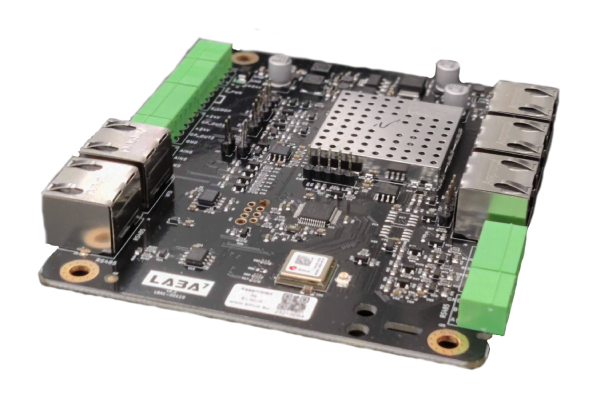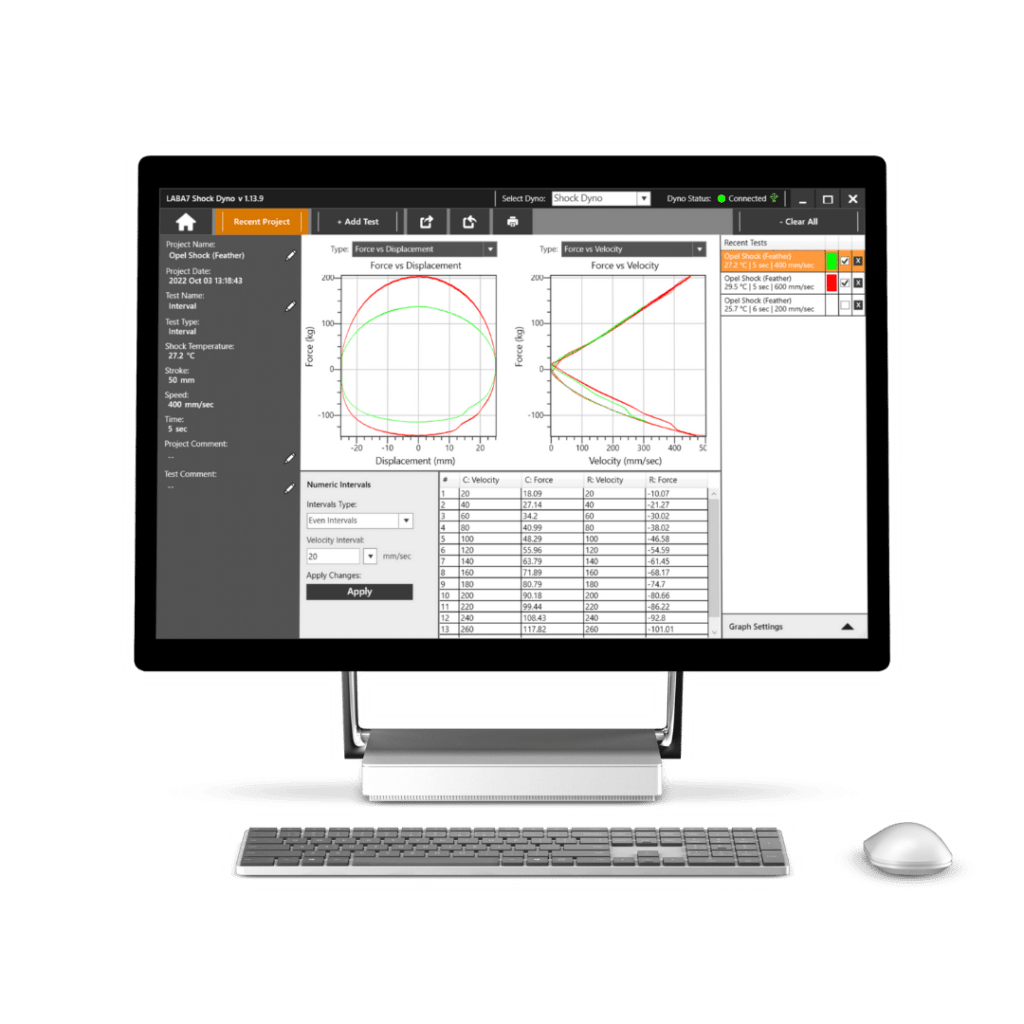Understanding shock dynamometers is easy. Despite the diversity of shock dynamometers, certain core components are essential to their operation. Data loggers, load cells, and software play important roles in ensuring the accuracy and usability of shock dynos.
In this article, we will explore the significance of these components and how they contribute to effective shock testing.
Table of contents:
Why data loggers are important?
Data loggers record and store various parameters during shock dyno testing. These parameters include force, displacement, velocity, temperature, and other relevant data points.
When we talk about shock dynos, data loggers have two very important tasks:
- capture real-time measurements,
- ensure that data is not lost during the testing process.

It’s their job to obtain accurate data and provide reliable results. So you could make an informed decision about the performance of shock absorbers and dampers.
They play such a pivotal role in diagnosing shocks, that we developed a data logger of our own. We could not sacrifice accuracy and choose 3rd party data loggers.
LABA7 data logger samples information thousands of times per second. Humans could not comprehend the amount of raw data which is why we developed dedicated software.
Why software is important for shock dynos?
Software is another critical component that complements the functionality of shock dynos. It serves as the interface between the operator and the dyno, offering several essential functions:
- Shock dyno software collects data from the data logger, cleans it from noise, and displays it in easy-to-understand graphs. Visualized performance of dampers is the most straightforward way to identify any anomalies or areas for improvement. Check this article on how to read shock dyno graphs to learn more.
- Shock dyno software allows users to define specific test profiles and control the dyno’s operation during testing. This customization capability is vital for replicating different road scenarios and obtaining comprehensive test results.
- Shock dyno software includes automation features, streamlining the testing process and reducing the need for manual intervention. Automated testing improves efficiency and consistency in data collection.

What is better for shock dynos: in-house or third-party software?
For us, the choice is clear – in-house shock dyno software is the best solution. This idea is also strongly supported by our customers that manufacture shock absorbers. Wonder why we are such strong believers? Here’s the answer:
In-house shock dyno software:
- Developing in-house software allows us to create and implement tailor-made solutions.
- New features, updates, bug fixes – everything can be developed and rolled out much faster.
- Our customers can suggest developing custom features and we can do it (and we did a couple of times already). Having third-party software would make this process extremely long if possible at all.
- LABA7 and our customers are not dependent on the schedule and plans of third parties.
Third-party software:
- Normally, third-party software would be developed and refined by experienced companies. The problem is that this market is not that big and it is not financially viable for third parties to develop and maintain software. The third-party software that we came across was not, gently speaking, great.
Yes, developing in-house software requires additional resources, time, and skilled software developers. But we see that most if not all shock dyno manufacturers are stuck in the early 2000s and we simply cannot take it.
Suspension professionals in workshops, racing teams, and teams of damper manufacturers, athletes, and anyone who tests their shocks are worthy of a great shock dyno software and LABA7 is bringing that to them.
The Role of Load Cells
Load cells are indispensable components of shock dynos, as they are responsible for measuring the forces exerted on the suspension system. Here is what they do:
- Load cells serve as transducers that convert physical forces into electrical signals, providing accurate measurements for data analysis.
- They accurately measure the forces experienced by the shock absorbers and dampers during testing. This data allows operators to assess the performance of these components under various conditions.
- By accurately quantifying force inputs, load cells enable a precise analysis of shock absorber behavior, leading to data-driven adjustments and improvements.
- Load cells can detect irregular force patterns or changes in damper behavior, indicating potential issues or wear within the suspension system.
—
Thank you for visiting this article about different types of shock dynos and their most important parts!
If you liked this article, you might like these as well:

